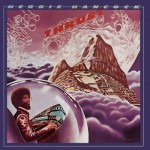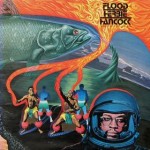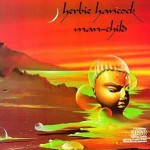The coolness of Herbie Hancock is a topic I’ve grappled with on at least a couple of occasions (the key takeaway: he’s cooler than me, you, and everyone else we know).
For a fuller assessment, you can check out my thoughts HERE and HERE.
The long and short:
Everyone knows that Herbie Hancock is one of the coolest men on the planet, and has been for almost half a century. Anyone who doesn’t know this doesn’t know much; all we can offer them are condolences. Only Miles Davis, with whom Hancock worked for several crucial years (in both mens’ lives) during the mid-’60s, can possibly be invoked in any discussion of popular musicians who consistently shaped, then challenged the vanguard over a substantial period of time. These artists not only made new music but changed music on at least a handful of occasions.
Most folks know, and love, Hancock from what was likely their first association with him: the song (and more significantly, the video) “Rockit”, which was prominent in the MTV rotation circa 1983. The import of this one song is impossible to overstate: it not only spotlighted black men on the then-lilywhite music video channel, it spotlighted a jazz band. On top of that, it served as a mainstream introduction to scratching and turntable pyrotechnics. To say the earth was no longer flat, sonically speaking, after “Rockit” is only hinting at its influence.
But before the ’80s, Hancock made music that remains fresh and vital. Just looking at some of the album covers from the ’70s era (below) should hearten the faithful and intimidate the weak. Street cred? Can you say soundtrack to Death Wish? That not impressive enough? How about Antonioni’s Blow-Up?
How about the cover art for some of those early ’70s joints. Any questions?
Of course, Herbie arguably made his most enduring music in the ’60s. In 1963 Miles Davis asked Hancock (along with bassist Ron Carter, tenor sax player Wayne Shorter and seventeen year old wunderkind drummer Tony Williams) to join his new quintet. To put it as simply as possible, this is the best band ever assembled in jazz history; only John Coltrane’s Classic Quartet comes close. And while many geniuses, from Charlie Parker to Ornette Coleman, led top-tier collectives, there is really no touching this ensemble.
But we all already knew this, right?
Right.
So……imagine my delight when I stumbled on this, a complete in-color concert from back in the DIZAY, on our best friend, YouTube.
If you think I am inclined (or able) to describe what happens, you are mistaken. Just kick back and watch, listen and learn what all of us already know.




